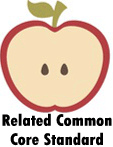Complex Sentences Worksheets To Print:
Sentence Types - The subordinate clause is where it's at! Read each sentence. Underline the subordinate clauses. Identify the type that each exhibits. Write it on the line.
The All Important Sentence - We have you create a complex form for yourself. Read each set in the series found below. Create a complex sentence that will signal to
the reader that the former portion is the most important.
Complex Composure - Starting from scratch is usually the best way to do it. Write 5 original complex sentences. Include subordinate clause for each, using
the word in parentheses.
Where's the Subordinate? - If you lack thought, you're a subordinate. Underline the subordinate clause in each complex sentence.
Inside Relationships - What is the most important part of each sentence? Read each set of them below. Create a complex sentence that
will signal to the reader that the statement in parentheses is the most important.
Creating Complex Sentences - Connect each of the following sentences to a related, independent clause to create a complex sentence.
Where My Commas At? - Underline the subordinate clauses in each sentence below. Add a comma where necessary.
Adverbial Clauses - Include an adverbial clause for each as indicated in parentheses.
Types of Sentences - Identify whether it is simple, compound, complex, or compound-complex.
Under the Lines - You will have to examine 2 of these problems very closely.
What are the Differences between Compound and Complex Sentences?
This is often a difficult concept for most students. Especially students that are non-native English speakers. Trying to decipher between the two forms requires you to pick each sentence apart.
Compound sentences are formed with the use of two or more complete thoughts (independent clauses). The multiple thoughts in compound sentences are connected through the use of a coordinating conjunction (i.e. and, but, for, nor, or, so, yet). An example compound sentence: Jason ran and Mia swam. In this sentence Jason's and Mia's activities are complete thoughts.
Complex sentences have a complete thought and at least one incomplete thought. This means that the sentence does contain equal parts by design. An example we could work with is: Nate laughed when I told him a joke. Nate laughed is a complete thought. When I told him a joke is an incomplete thought.
The summation is that when we are looking for compound sentences, no incomplete thoughts reside in those types. If we see an incomplete thought, we know we are working with a complex sentence.
Activities That Help Students Pick This Up Quicker
I find a great way to get students to understand this skill is to have them recognize it some work that they already read on their own. Have them bring in their favorite newspaper, magazine, or even print out an article from their favorite web site. Have them take the time to identify complex sentences in those works. Many teachers shy away from doing this because it is very time consuming to check students work, but I have a solution for you. Have students identify one example in their favorite work, then as a class ask them to validate it by having them mark the dependent and independent clauses, relative pronouns or conjunctions. If they cannot have them go back over the work. Once they validate it, have them pair up and peer review each other’s work. I would suggest having at least three people in a group. This gives them at least two other sets of eyes to review their work. Once everyone validates the work in their group, go over each entry as a class. This will take an entire class period, but it will definitely be remembered by students for long after that.
Another activity that I find tremendously helpful here is what I call the Sentence Strip Game. It starts by pairing up students and giving them three worksheets. One sheet is twenty or thirty independent clauses, another is twenty or thirty dependent clauses, the last sheet is just a huge list of subordinating conjunctions. I give students ten minutes to as a group create the zaniest complex sentence that they can put together as a group. We make it a contest and have the class vote for the best sentence. The group the wins gets some little prize, but it makes for a very motivating exercise for all the students.

